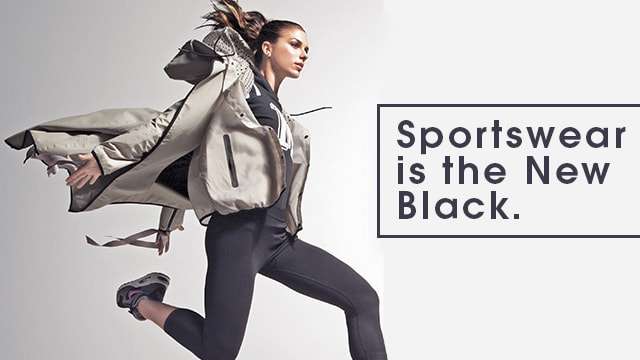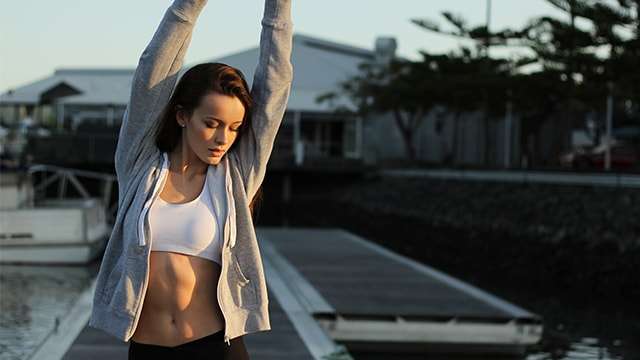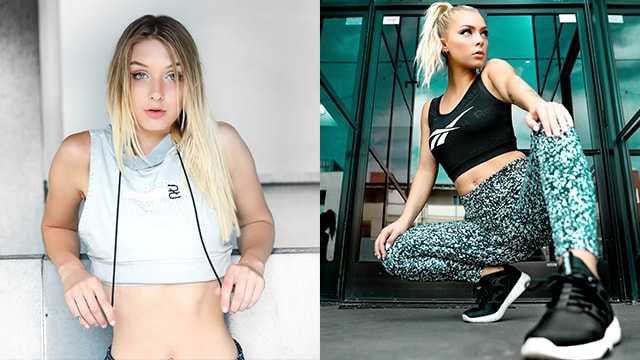
A decade ago, the sportwear market was driven by the concept of ‘cool’ brands that had products which could be identified with the notion, and reaped in profits. Market leaders like NIKE, Adidas, Under Armour, PUMA, each had their own set of loyalists, from celebrities, sports persons to the sports crazy common man. But of late, even as the sportswear segment continues to grow, it has a new and more demanding driver – ‘women’. According to findings by Allied Market Research, the sportswear category will grow at a CAGR of 4.3 per cent to reach a total market revenue worth US $ 184.6 billion by the year 2020. And though the men’s sportswear segment today constitutes around 52 per cent of the revenue and is the highest revenue-generating segment in the sports apparel market, every brand has realised the potential of the women’s segment that is expected to grow at a relatively higher CAGR of 5.7 per cent during the forecast period, as involvement of women in sporting and fitness activities increases across the globe.
Every sportswear brand has in the last one year added lines targeted specifically at the woman consumer. The momentum has now become so strong that even high street retailers including Next have gone ahead to introduce sportswear apparel sections that cater exclusively to women. Nike and JD Sports have opened up stores that are all-woman because of the trending size of women sportswear market. Significantly, the sport industry is encouraging collaborations between sports brands and fashion industry in order to produce new styles to cover the needs of the young and women segment that are significantly growing over the past years.

Brands go all out to woo women consumers…
Earlier this year, Nike made a massive push to lure female customers with the #BetterForIt campaign, and the push has led to a spike in sales. Now, Nike has launched a web-series called “Margo vs. Lily” as a part of that effort, creating quite a sensation. Though the push to corner the women’s sportswear market started earlier, the real thrust came at the end of 2015, and in 2016, the company announced its ambitious plan of turning women’s sportswear into a US $ 11 billion business by 2020, impacting its marketing budget, with spend up for the segment by 10 per cent year-on-year.
Under Armour, too has been aggressively zeroing in on its female-targeted marketing campaigns by enlisting stars like Gisele Bundchen and Misty Copeland to empower women. The catchphrase “I will what I want” sends a powerful message to consumers. The confidence of the company is reflected in the statement of its CEO, Kevin Plank, who has said he plans for the company’s women’s business to usurp that of its men’s business. According to the consulting firm Conlumino, Under Armour’s business approximately splits at about US $ 1.14 billion for women and US $ 2.69 billion for men.

The women’s business of PUMA received a lot of attention in 2016. Building on PUMA’s fashion credibility and sports authenticity, as well as profound understanding of the modern female athletic consumer, the company has positioned PUMA to address the segment “where gym meets the runway”. In 2016, PUMA successfully introduced cross-category collections by merging sports and fashion. Its “DO YOU” campaign, aims to inspire confidence in women around the world, collaborating with a number of famous female brand ambassadors such as Rihanna, Kylie Jenner, Cara Delevingne and the New York City Ballet has helped to tell a powerful story. Its “FENTY PUMA by Rihanna” runway shows during the New York and Paris Fashion Weeks created major social media buzz. The brand believes that their women-specific collections are among the best performers in terms of both sell-in and sell-through with many major retailers providing additional space for their female collections.
The latest to join the hit parade is Adidas. The brand has hired a new team to overlook the new direction, and the instructions are clear – “Bring the active woman to the store.” In a move that is considered no less than a coup, Adidas has tapped Christine Day, former CEO of Lululemon, to advise the brand. Lululemon is considered a market leader in women’s activewear segment. Taking the initiative a notch higher, the brand has launched a subscription box specifically for women called Avenue A, which contains a selection of seasonal training gear for women, curated by what Adidas is calling “fashion-forward trendsetters and trainers”. For the first box, Adidas enlisted “fitness artist” Nicole Winhoffer. “Our brand is listening to what women truly want, and that is product designed specifically for her combined with unique, customized experiences,” said Kelly Olmstead, Adidas’ Senior Director of brand activation, in a release.
What was once an ‘also’ market, is now a fast-growing segment that no sportswear brand/manufacturer can afford to ignore. Even a company like Dick’s Sporting Goods, not exactly known for its fashion-forward women’s clothes, has launched a new line, CALIA by Carrie Underwood, and is testing a women’s boutique store concept called Chelsea Collective. Supporting the trend is an overall shift towards athleisure, and while some of the athleisure trends are simply trends, one cannot overlook the fact that there is a fundamental shift towards women beginning to embrace body-positive confidence and empowerment, and an increasing desire to wear something that is flattering, but comfortable. Many retail analysts believe that the demand was always there, but the supply wasn’t. So women had to adjust with smaller sizes of men’s sportswear, which was not very appealing. And now that the shift in focus for big brands is very visible, there is no stopping to the growth in the segment not only for the bigger brands, but also for smaller women-specific lines like Oiselle, which are looking for a foothold in US $ 20 billion market.

Post a Comment